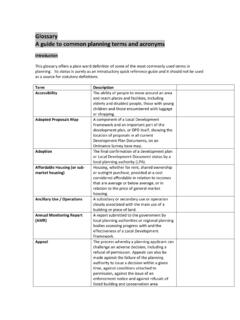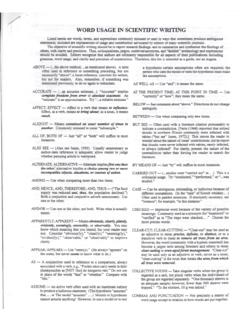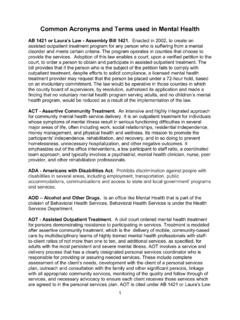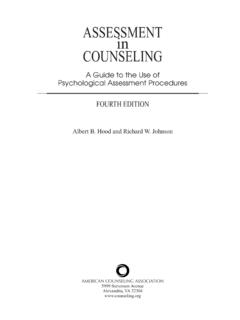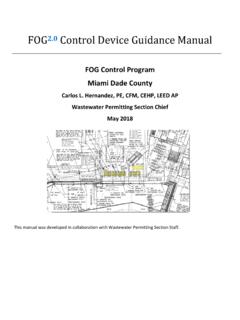Transcription of Guide to Document Preparation - National Institutes of Health
1 Guide to Document Preparation Office of the Secretary 2012 Contents of Guide Chapter 1: 1 Overview ..1 Chapters 1 through 4 ..1 Chapters 5 through 9 ..1 Key Points to Remember ..2 Ten B asic Rules ..2 Chapter 2: Plain 3 The Plain Writing Act ..3 Useful References ..3 Plain Writing Ti ps to Improve Clarity ..4 Plain Writing Ti ps to Improve Chapter 3: Word 7 Word Usage ..7 Consist ent Terminology ..9 Plurals of Compound Terms ..9 Correct Possessive Words ..10 Chapter 4: 11 Capitalization ..11 Punctuation and Chapter 5: Correspondence .. 16 Correspondence Overview ..16 Timeliness ..16 Content: Composing Effective Formatting Secretarial Le Template of Letter ..20 Forms of Address for Letters ..21 Salutations fo r ..21 Mailing A ddresses and Salutations f or the President and His/Her Mailing A ddresses and Salutations f or Members of Congress ..22 Mailing A ddresses and Salutations f or Governors ..22 Mailing A ddresses and Salutations f or State Chapter 6: Decision Memos.
2 24 Decisi on Memo Overview ..24 Pr ocess ..24 Timeliness ..24 ii Types of Decisi on Memos ..25 Template of Standard Decisi on Memo ..28 Example of Standard Deci si on Memo ..29 Template of Decisi on Memo with Multiple Options ..30 Example of Decisi on Memo with Multiple Options ..32 Template of Regulation Memo ..35 Example of Regulation Memo ..36 Chapter 7: Information Memos/Alerts .. 38 Information Memo Overview ..38 Information Alert Overview ..38 Template of Information Example of Information Example of Information Alert ..42 Chapter 8: Briefing 43 Briefing Memo Process ..43 Key Points ..43 Do s and Don ts ..44 Template/Exa mple of Briefing Chapter 9: Clearance Process .. 48 Clearance Process Tips for Clearing Documents ..49 Who Clears What at HHS ..50 1 Chapter 1: Introduction Overview This Guide provides guidance on how to draft and cl ear Secretarial documents to ensure that every Document fo r the Secretary s review and consideration is well-written, clear, and direct so t he S ecretary can make informed decisions or take appropriate action quickly and effectively.
3 I t also establishes standards and guidelines f or Document pr eparation to ensure that the fl ow of information is more consistent and r esponsiv e. The Guide is available as a web-based version and a PDF version at Please always keep in mind that every Document the Secretary sees can communicate decisi ons or information to the public, whether the communication is through correspondence, a r eport , or the S ecretary s own remarks. Each Document therefore must be well-written, responsiv e, understandable, thoughtful, and effective in addressing the issues at hand. This Guide outlines t he st andards and guidelines to achieve this goal. Chapters One t hrough Four Chapter One provides an overview of key points to remember when draft ing and clearing Secretarial documents. Chapter Two briefly descri bes t he Plain Writing A ct of 2010 and some of the most important tenets of using plain language. C hapter Three focuses on correct word usage, and Chapter Four offers tips on capitalization and punctuation.
4 The information in these chapters is not intended to be all-encompassing. For more comprehensive information, pl ease see the Useful References secti on at the beginning of Chapte r Two. It highlights the f ederal government s plain writing w ebsite, as well as published style manuals on grammar and punctuation. Chapters Five through Nine Chapters Five through Eight provide specific instr ucti ons on preparing correspondence, decisi on memos, information memos and alerts, and briefing memos f or the Secretary. Chapter Nine addresses t he clearance process, offeri ng ti ps for clearing documents. It also includes a chart providing an overview of Department components in charge of specific types o f clearances. 1 There may be different prefer ences f or documents the Department will put on the web. If y ou have any questions, please consult the ASPA web divisi on or the Department s web style Guide , available at ml. 2 Key Points to Remember Every day, the Secretary reads dozens of memos, letters, and reports fr om agencies across the Department.
5 To do so , she needs to be able to scan documents quickly and grasp the main points easily. Below are 10 basi c rules for preparing letters, memos, and other material for the Secretary. The next chapter explains the reasons for so me of these rules but most are self-explanatory. Print this list and keep it accessible. If you follow these rules, you will a lready be a long way toward achieving the goal of cr eating documents that are easy to read and easy to underst and. Ten Basic Rules 1. Use si mple, clear words. 2. Be concise. Provide only the information the Secretary needs to know. 3. Explain the purpose of the Document early and cl early. 4. Write short sentences and short paragraphs in most cases. 5. Keep the Document short generally , a memo of two to four pages and a lette r of one to two pages. 6. Use active voice instead of passive voice whenever possible. 7. Use white space, bullets, or other visual tools to present the information in a way that is easy to absorb.
6 8. Avoid overly technical, sci entific, or legal jargon, and keep acronyms to a minimum. 9. Use spell check, and check your grammar. 10. Meet all deadlines, particularly those that are part of the three-week turnaround for responding to Secretarial letters. 3 Chapter 2: Plain Writing The Plain Writing Act On October 13, 2010, President Obama si gned into law the Plain Writing Act of 2010. The purpose of the law is to improve cl arity and simplicity in government communica tion. The Plain Writing Act requires federal agencies to use cl ear language that the public can underst and and use. The law requires agencies to write in plain language all covered documents that are new or substantially revised. Covered documents include those that: are necessary for people to obtain any federal government benefit or service or to file taxes; provide information about any federal government benefit or service; and explain to the public how to comply with a requirement that the federal government administ ers or enforces.
7 The Act also requires agencies to use plain writing in every paper or electronic lette r, publication, form, notice, or instruction. While regulations are exempt, the Office of Management and Budget has noted that rulemaking preambles are not exempt and that long-standing policies require agencies to write regulations in a manner that is si mple and easy to understand. This chapter contains tips on plain writing. To learn more about plain writing, grammar, and punctuation, please see the references below. Useful References is the federal government s plain writing website. It discusses the full range of plain language principles. The Federal Plain Language Guidelines are available at Other helpful resources include: The Elements of Styl e (Strunk & White) The Government Printing Offi ce Styl e Manual ( ) The Chicago Manual of Styl e 4 Plain Writing Tips to Improve Clarity Use active voice instead of passive voice.
8 In the active voice, the subject of the sentence acts. In the passive voice, the subject of the sentence is acted upon. Verbs in the active voice are st ronger and enhance cl arity. They make a sentence easier to read. Examples: Active: Passive: I received your letter. Your letter has been received. Tom will prepare a report. A report will be prepared by Tom. Use action verbs to avoid word clutter. Use does verbs instead of is verbs. Example: He runs instead of He is running. Avoid past perfect verbs. Example: We wrote instead of We have written. Instead of .. Try .. We are in agreement We agree The host is remembering The host remembers The Department has established The Department established We have shared We shared The Task Force has compiled The Task Force compiled State law is in compliance State law complies Write short sentences more frequently than long sentences. Use short sentences to make your point clear on the first reading.
9 People digest short sentences faster than long sentences. Write short paragraphs. Short paragraphs are easi er to read than long paragraphs. The white space aft er a paragraph gives readers a second to absorb the material they have just read before moving to the next paragraph. Use pronouns. Use pronouns such as you, we, and us, when appropriate. Pronouns are more direct and sound like everyday language. In an instruction memo for job applicants, which sentence is more straightforward? All job applicants are encouraged to bring writing samples to their interviews. We encourage you to bring writing samples to your interview. Use parallel construction . Make sure a se ries of words, phrases, or clauses in a list are in the sa me grammatical form so that they are paralle l. For example, if the first bullet in a list contains a phrase st arting with a verb, all of the bullets in the list should contain a phrase starting with a verb.
10 5 Avoid unnecessary words. Some of the most fr equently encountered unnecessary words and phrases, with suggested improvements, follo w: Instead of .. Try .. at the present time now first annual first or inaugural in the event that if prior to before as a result of because for the purposes of to reason why reason whether or not whether certainly (eliminate this and most other intensifying modifiers, such as very ) Avoid redundant words or phrases. both (You can usually just say and. ) either (You can usually just say or. ) in addition also (They mean the same thing.) and also (This is almost always redundant.) close scrutiny (By definition, all scrutiny is close.) advance planning (You cannot plan after the fact.) major breakthrough (A minor discovery is not a breakthrough.) new innovation (Innovations are always new.) but nevertheless (One or the other is sufficient.) on the occasion when (Either on the occasion of or when will suffice.)

